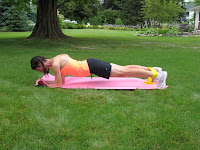Each generation has nutritional and exercise requirements unique to its age group. The period during which you were raised influences your health behavior and practices as an adult. Advancements in the field of medicine and a greater understanding of the importance of healthy lifestyle habits has changed the view of aging for the baby boomer population.
However, advancing age, regardless of fitness level and nutritional status, does result in inevitable changes to the body. One of the better known physiological changes is a decrease in muscle mass, at an average rate of 0.5-1.0% per year after the age of 40. Bone mass also declines. Energy needs change as a result of these alterations in body composition. In the baby boomer generation, compared to the preceding generation (individuals born between 1926-1945, a.k.a., the "silent generation"), increased rates of obesity at an earlier age have been noted. Associated with this is an increased relative risk of arthritis for boomers.
Another age-related change of which the boomer needs to be cognizant is a decrease in gastrointestinal (GI) function. GI tract motility is reduced and the absorption of calcium, Vitamins B6 and B12, and possibly iron and zinc, is decreased.
Older boomers may experience a decreased capacity to dissipate heat, increasing the risk of developing heat exhaustion or heat stroke during exercise. With advancing age, blood flow to the skin is reduced and sweat production per gland is decreased. Both processes are mechanisms by which the body cools itself.
As a result of these age-related changes, there are some general health tips that the boomer should follow. It is important for members of the boomer generation to note that, as they age, their nutritional requirements change. Thus, protein needs may be higher to attenuate muscle mass loss. However, since many Americans already consume more than the RDA for protein (46 grams/day for women over 31 years and 56 grams/day for men over 31 years), baby boomers should concentrate on the form, not just the quantity, of protein that they consume.
Boomers should aim to meet the RDA for protein by eating protein sources that have a high biological value (contain the essential amino acids). These sources are referred to as complete proteins and include eggs, lean meats, poultry, fish, and low-fat dairy products. Foods that have a low biological value, also known as incomplete proteins because they are missing at least one essential amino acid, can be combined to constitute a high biological value protein source. These sources include whole grains, vegetables, legumes, and seeds.
Other nutrients that members of the boomer generation should concentrate on getting adequate amounts of are calcium, folate, zinc, and Vitamins B6, B12, and D. Fiber and fluid consumption should be increased to counteract the changes in GI tract motility. Adequate fluid replacement will also help to prevent dehydration, especially from exercise. Boomers should note that with advancing age, the desire to eat may lessen interfering with consuming the proper amount of nutrients. Eating smaller, more frequent meals may help to overcome this.
Regular exercise of at least 150 minutes per week at a moderate-intensity level will attenuate changes in body composition and decrease the risk of chronic diseases. The overweight boomer should aim to get in at least 250 minutes of moderate-intensity exercise per week for weight management. Strength training exercises should also be incorporated to improve body composition and to promote bone health. Individuals with arthritis may find it best to participate in low-impact activities such as swimming and bicycling.
Although the physiological changes associated with aging are inevitable, baby boomers can attenuate these changes by adopting and adhering to healthy lifestyle habits. By so doing, they increase their likelihood of living an independent and active life in their golden years.
Resources:
The Coaches Guide to Sports Nutrition, 2007; pp. 213-219. Benardot, D. and Thoompson, W.R.
ACSM's Certified News, November/December 2008, "Nutrition and Physical Activity for Baby Boomers," p. 9-10. Volpe, S.
Labels: ACSM, ADA, age-related body changes, American College of Sports Medicine, American Dietetic Association, baby boomers, boomers
 Chris Popp on the "size cycle" during a bike fitting session at Peak Performance Ski & Bike in Sylvan Lake, Michigan.
Chris Popp on the "size cycle" during a bike fitting session at Peak Performance Ski & Bike in Sylvan Lake, Michigan.
 RSS
RSS


















































